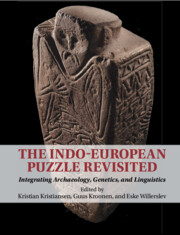Book contents
- The Indo-European Puzzle Revisited
- The Indo-European Puzzle Revisited
- Copyright page
- Contents
- Figures
- Tables
- Contributors
- Preface
- Introduction
- Part I Early Indo-European and the Origin of Pastoralism
- Part II Migratory Processes and Linguistic Dispersals between Yamnaya and the Corded Ware
- Part III The Cultural and Linguistic Significance of Bell Beakers along the Atlantic Fringe
- Part IV The Bronze Age Chariot and Wool Horizons
- Part V Kinship Systems, Marriage, Fosterage, Free, and Unfree
- 19 Mobility, Kinship, and Marriage in Indo-European Society
- 20 Marriage Strategies and Fosterage among the Indo-Europeans: A Linguistic Perspective
- 21 Fostering Women and Mobile Children in Final Neolithic and Early Bronze Age Central Europe
- 22 Hiding in Plain Sight? The Enigma of the Linguistic Remains of Prehistoric Slavery
- Concluding Reflections
- Index
- References
21 - Fostering Women and Mobile Children in Final Neolithic and Early Bronze Age Central Europe
from Part V - Kinship Systems, Marriage, Fosterage, Free, and Unfree
Published online by Cambridge University Press: 29 April 2023
- The Indo-European Puzzle Revisited
- The Indo-European Puzzle Revisited
- Copyright page
- Contents
- Figures
- Tables
- Contributors
- Preface
- Introduction
- Part I Early Indo-European and the Origin of Pastoralism
- Part II Migratory Processes and Linguistic Dispersals between Yamnaya and the Corded Ware
- Part III The Cultural and Linguistic Significance of Bell Beakers along the Atlantic Fringe
- Part IV The Bronze Age Chariot and Wool Horizons
- Part V Kinship Systems, Marriage, Fosterage, Free, and Unfree
- 19 Mobility, Kinship, and Marriage in Indo-European Society
- 20 Marriage Strategies and Fosterage among the Indo-Europeans: A Linguistic Perspective
- 21 Fostering Women and Mobile Children in Final Neolithic and Early Bronze Age Central Europe
- 22 Hiding in Plain Sight? The Enigma of the Linguistic Remains of Prehistoric Slavery
- Concluding Reflections
- Index
- References
Summary
Over the last several years, it has become clear that Central and Western Europe witnessed an enormous transformation during the third millennium – not only in cultural terms, as has long been clear from the appearance of the Corded Ware Complex (CWC) and the Bell Beaker Complex (BBC), but also from a genetic point of view: archaeogenetic analyses from Central Europe to the British Isles and the Iberian Peninsula have revealed genetic signatures with an origin in the western Eurasian steppe regions (Haak et al. 2015; Allentoft et al. 2015; Olalde et al. 2018; Olalde et al. 2019; Fernandes et al. 2020). Whereas early publications on this topic employed dubious vocabulary, like “Yamnaya migration,” there is no doubt that the spread of genes from east to west in prehistoric times could only take place through mobile individuals. Archaeogenetic studies have also suggested a sex bias in these mobile people and that the migration process was predominantly related to male mobility (Goldberg et al. 2017). Since the publication of the scientific results for the Iberian Peninsula (Olalde et al. 2019), newspapers have even interpreted this as evidence of male hoards invading Spain and committing genocide of the local male population. There is no doubt that such simplified narratives do justice neither to archaeological theory nor to the aim of narrating a complex past in a comprehensible manner.
- Type
- Chapter
- Information
- The Indo-European Puzzle RevisitedIntegrating Archaeology, Genetics, and Linguistics, pp. 303 - 307Publisher: Cambridge University PressPrint publication year: 2023



